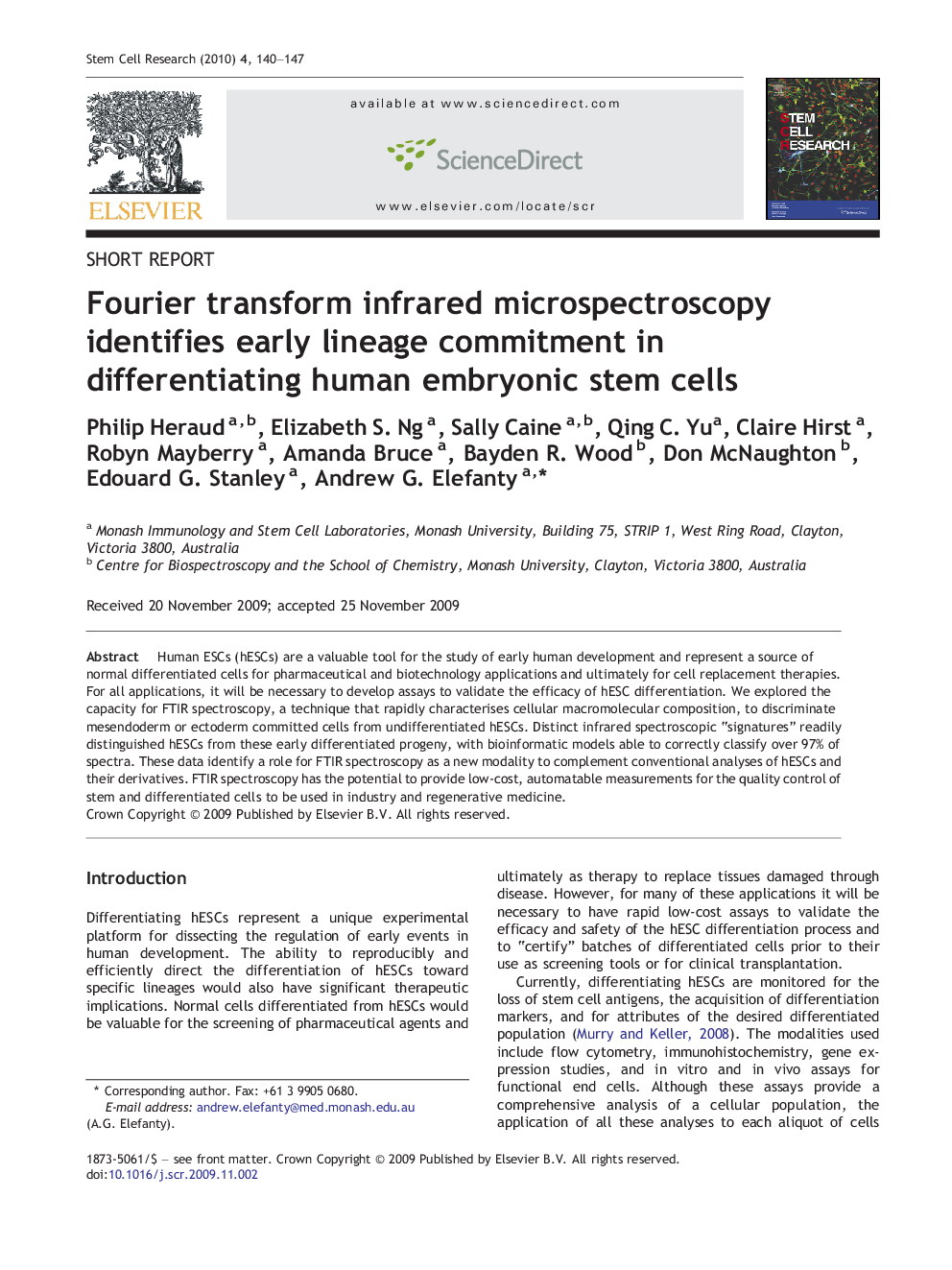| Article ID | Journal | Published Year | Pages | File Type |
|---|---|---|---|---|
| 10891358 | Stem Cell Research | 2010 | 8 Pages |
Abstract
Human ESCs (hESCs) are a valuable tool for the study of early human development and represent a source of normal differentiated cells for pharmaceutical and biotechnology applications and ultimately for cell replacement therapies. For all applications, it will be necessary to develop assays to validate the efficacy of hESC differentiation. We explored the capacity for FTIR spectroscopy, a technique that rapidly characterises cellular macromolecular composition, to discriminate mesendoderm or ectoderm committed cells from undifferentiated hESCs. Distinct infrared spectroscopic “signatures” readily distinguished hESCs from these early differentiated progeny, with bioinformatic models able to correctly classify over 97% of spectra. These data identify a role for FTIR spectroscopy as a new modality to complement conventional analyses of hESCs and their derivatives. FTIR spectroscopy has the potential to provide low-cost, automatable measurements for the quality control of stem and differentiated cells to be used in industry and regenerative medicine.
Related Topics
Life Sciences
Biochemistry, Genetics and Molecular Biology
Biotechnology
Authors
Philip Heraud, Elizabeth S. Ng, Sally Caine, Qing C. Yu, Claire Hirst, Robyn Mayberry, Amanda Bruce, Bayden R. Wood, Don McNaughton, Edouard G. Stanley, Andrew G. Elefanty,
